Is Florence Worth Visiting? My Honest Opinions + What It’s Famous For

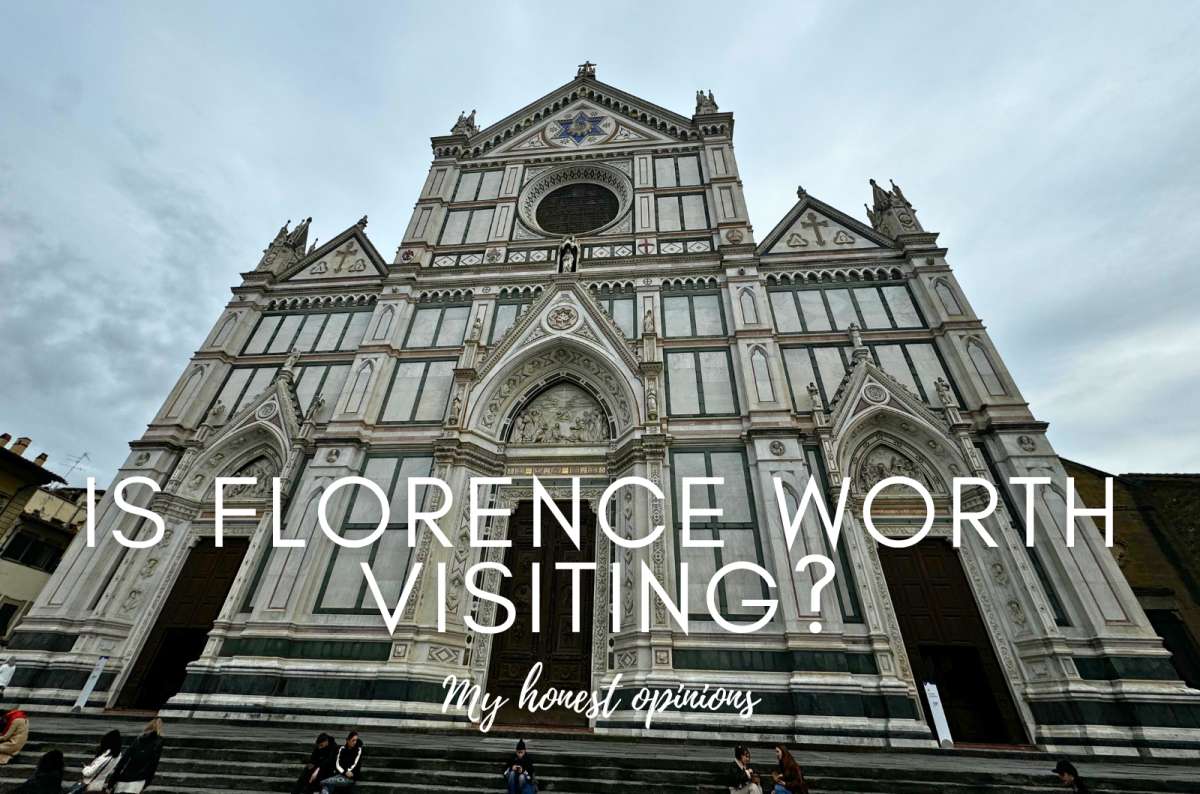
Quick rankings from my Florence visit
Is Florence worth visiting if I’m not an art lover?
Top 10 things to do in Florence (my version)
Full transparency: the downsides of Florence
What I skipped in Florence (without FOMO)
How to make the most of your Florence trip
Is Florence expensive & what you’ll actually spend
The delicious food and wine scene in Florence
Where to stay and how to get around Florence
Is Florence worth visiting? Short answer: yes—if you can handle art overload, crowds, and a city that takes itself very seriously. If you’re wondering what Florence, Italy is really like, picture a living Renaissance museum that’s jaw-dropping from the outside, and a little overwhelming on the inside.
I’d describe Florence as a Renaissance explosion where everything is marble, painted, or sacred. You are surrounded by stunning architecture and renaissance masterpieces at every turn. You will feel imposter syndrome (“Why does everyone look like they know so much about art?!”).
For me, Florence was a beautiful challenge. Only after visiting the first time was I able to recognize museum fatigue coming on and know how to see Florence beyond the famous art spots.
Speaking of which, is Florence even worth visiting if you’re not an art enthusiast? I mean most of us aren’t art nerds in regular life, so is Florence really a good idea? I have an answer to “Why visit Florence, Italy?” for non-art lovers too.
Good news: Florence is worth visiting. Even when you’ve seen your fill of Madonnas, halos, and naked marble men, you’re still in a wonderful city that oozes atmosphere—stone streets, honey-colored buildings, and typically Tuscan views.
Here’s my review of Florence, art & beyond.
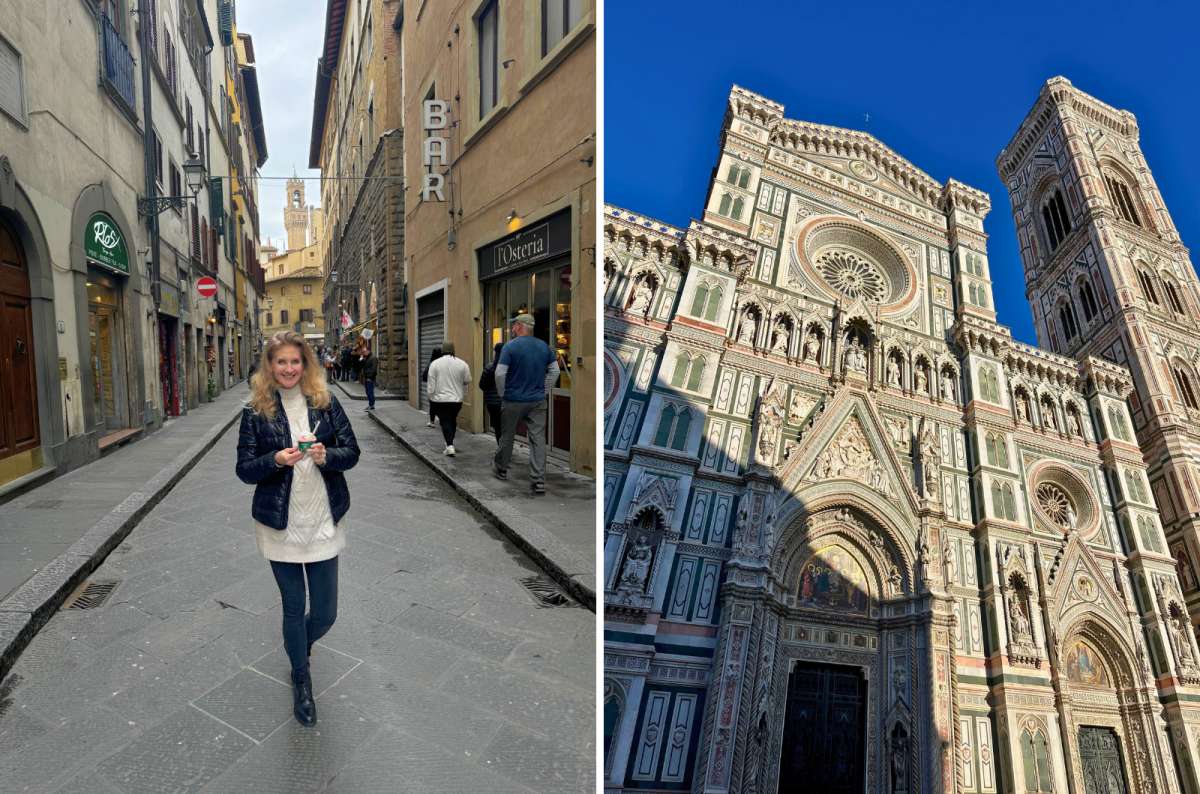
Streets of Florence and the stunning Florence Cathedral (Duomo di Firenze)
Read more from my Italy travel blog.
Quick rankings from my Florence visit
- Value for money: 7/10
- History and architecture: 10/10
- Things to do: 9/10
- Infrastructure and transport: 7/10
- Food and café scene: 8/10
- Overall experience: 86%
Sometimes, all you need to do is take the first step... I've filtered out the best hotels in Florence for you
Save it for yourself to come back to later, or share with your friends on social media!
I've already planned your ititnerary for the trip, complete with my travel tips.
Why go to Florence, Italy, at all?
Because nowhere else in the world offers this much Renaissance architecture, art, and atmosphere, along with iconic landmarks and historic buildings, packed into one place. Florence is chaotic, beautiful, and proud—and if you love history, design, or just cities that overdeliver visually, thanks to the city's rich history, it’s a must-visit destination.
What is Florence famous for: Renaissance art, fascinating history & wine
If you’re trying to figure out what Florence, Italy is really like, start with what it’s famous for. Florence is known for art, architecture, fashion, and old money with taste.
It’s where the Renaissance began and where Michelangelo carved abs and veins into marble like a boss. Leonardo da Vinci, another prominent figure of the Renaissance, also left a mark on Florence's artistic heritage.
(Wait! Before you get demotivated—I’ll discuss what there is to do in Florence besides seeing art in just a second, because yes, it gets overwhelming!)
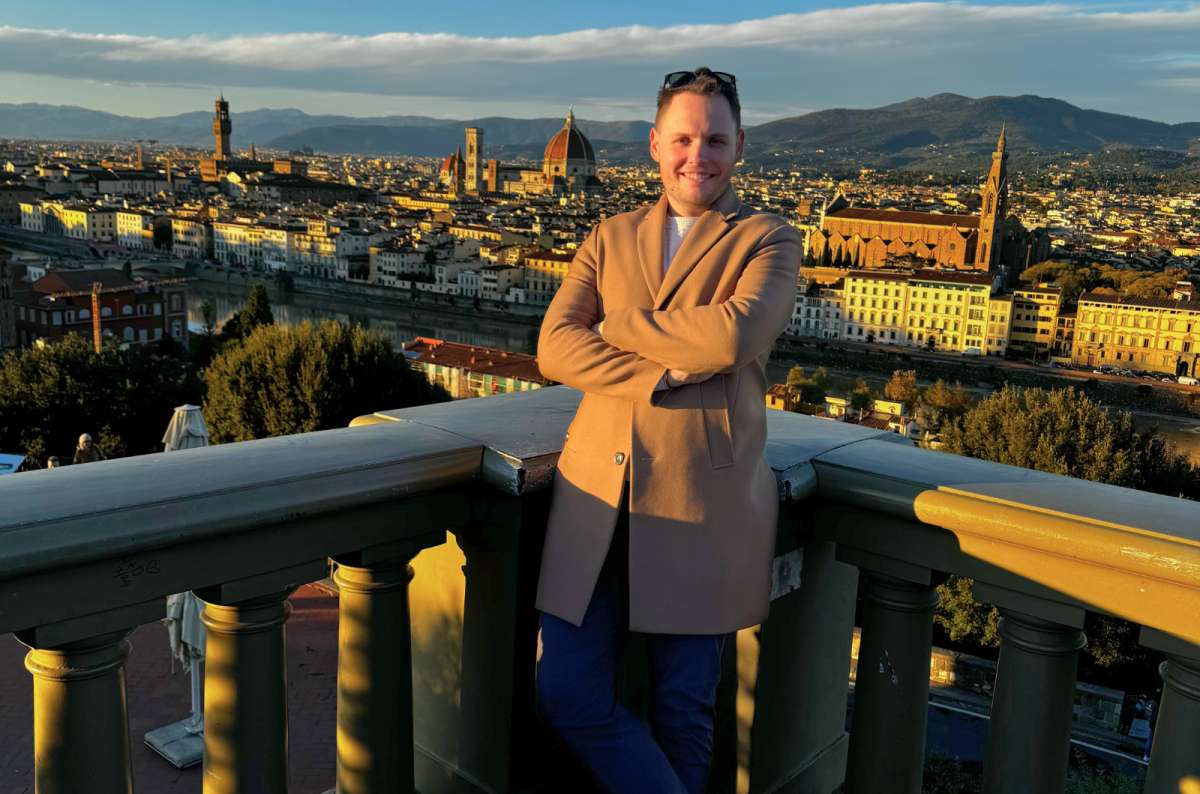
Sunset view of Florence from Piazzale Michelangelo
Here are the top famous spots that make Florence worth visiting:
- Florence Cathedral (Duomo) & Brunelleschi’s Dome – The cathedral is prettier outside than inside. If you only have time for one climb, pick Giotto’s bell tower—you actually get the dome in your view. The combo ticket is the only way this makes sense; the Opera museum was a secret hit for me.
- Uffizi Gallery – a top museum in Florence, but not the TOP-TOP-TOP experience I expected. You have to accept the crowd as part of the exhibit. See Botticelli, Giotto, Caravaggio decapitations, Dürer being Dürer.
- Michelangelo’s David (in Accademia) – He’s huger than I expected, perfectly carved, and yes, people comment on the butt. You will too. Accademia itself is tiny and crowded.
- Palazzo Vecchio & Piazza della Signoria – The heart of Florence. Statues everywhere, fake David included. You could stand here for an hour just watching people pretend they’re having deep thoughts.
- Santa Croce – To be honest, it looks better in photos. Michelangelo, Galileo, and Machiavelli are all buried here. Worth visiting if you like history or morbid sightseeing.
- Ponte Vecchio – Florence’s famous bridge is old, kind of cool, and overcrowded. I walked across once and then admired it from Ponte Santa Trinita. Not much else to do but jewelry shop there.
- Food & wine — Florence is famous for truffles and bistecca alla Fiorentina (steak). My best meal was truffle everything outside town at Osteria di Casa Chianti. As for local wines, Tuscan reds overperform; lampredotto is love-it-or-leave-it.
Read my practical guide on seeing the artwork in Florence if you still feel overwhelmed with choice.

Masterpieces inside the Uffizi Gallery in Florence, including Botticelli’s Birth of Venus
Is Florence worth visiting if I’m not an art lover?
Yes! You can only pretend to be cultured for so long. Most travelers simply aren’t that into art. But you still go to Florence because it’s Florence.
You might be thinking “I’m not really an art person, why go to Florence?” No worries, I’ve got you. Even if you skip half the museums, Florence is still worth visiting. Experiencing local life in Florence's neighborhoods—watching daily routines, exploring alleys, and mingling with residents—offers a genuine feel for the city beyond its art.
Once you’ve done the famous art stops—the Uffizi, Accademia (David), and Duomo complex—you’ve earned your freedom.
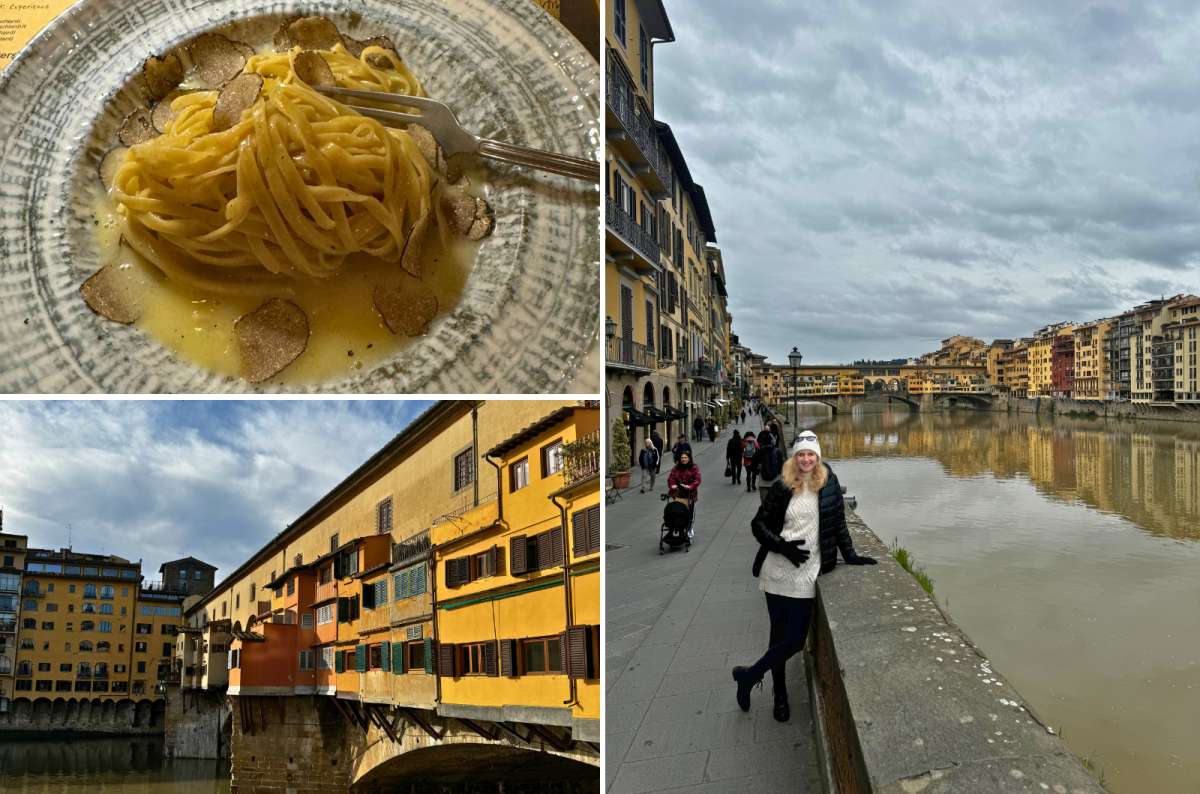
Classic Florence moments—truffle pasta, Ponte Vecchio, and a stroll along the Arno River
Here’s what to do in Florence besides looking at art:
- Milk golden hour. Walk the Arno River, climb to Piazzale Michelangelo for views. Bring a drink and stay until the lights switch on for hard-to-match romantic Tuscan vibes.
- Eat properly. Skip the Piazza tourist trap restaurants. Order bistecca alla Fiorentina, ribollita, or just pasta drowning in truffle oil (my personal favorite). Try local cuisine at local eateries for an authentic taste of Florence.
- Do an aperitivo like locals. Take part in the typical pre-dinner ritual = drink + snacks. Order something local (Tuscan red is top!) and enjoy the free nibbles you get with it.
- Craft & leather in the Oltrarno. You obviously have to cross Ponte Vecchio, but then make sure to wander the Oltrarno artisan workshops with unique crafts: see leather, paper marbling, and metalwork.
- Markets for mortals. Mercato Centrale is famous, and upstairs is an easy lunch; Sant’Ambrogio feels more local. Neither is life-changing, both will feed you well, and there’s no art in sight.
- Perfume time-capsule: Officina Profumo-Farmaceutica. Not a museum, but a real historic shop that looks like one. Poke around the gilded rooms for ten minutes, or drop €€€ on soap that’s too fancy to ever actually wash your hands with.
- Tuscan wine without leaving town. You’re in Chianti country. Order Chianti Classico with steak; if you’re day-tripping to San Gimignano, try Vernaccia there.
- Sunrise cheat. If crowds in Florence drain you, but you still want the best Florence experience, set an alarm. See Piazza del Duomo, Piazza della Signoria, and the Arno before 8 am. It’s like the same city, but different planet.
- Green breaks that aren’t museums. Choose Bardini Gardens (smaller, calmer, cleaner views) over Boboli. Or just go to the Rose Garden below Piazzale Michelangelo for free.
- Quick escapes to reset. When Florence starts to overload your senses, take a break. A truffle dinner in the hills at Osteria di Casa Chianti or a quick day trip to other Tuscan towns like Siena or Lucca do wonders. By the time you return, Florence feels magical again—until the next crowd.

Top 10 things to do in Florence (my version)

Florence Cathedral and Basilica di San Lorenzo—Renaissance architecture at its finest
Here are the famous places that Florence is known for, based on how much I think they are worth visiting.
Pro tip: Most attractions in Florence are within walking distance, so you can easily explore the city’s Renaissance treasures and its modern and contemporary art scene on foot.
- Giotto’s Campanile climb (a full view of the dome instead of from it.)
- Opera del Duomo Museum (full of masterpieces, people outside are staring at replicas of)
- David statue (Michelangelo’s 5-meter David is pure genius)
- Uffizi Gallery (world-class art museum, but can be overwhelming)
- Piazzale Michelangelo + San Miniato at sunset (the best panoramic view of Florence)
- Santa Maria Novella (calm, underrated, and atmospheric with creepy tomb art)
- Medici Chapels (pricey but totally worth it for the Michelangelo tombs—the Medici buried themselves like gods)
- Orsanmichele (half-church, half-museum, a quiet gem in Florence)
- Palazzo Pitti (skim) and Bardini Gardens (much calmer experience than Boboli)
- Gelateria dei Neri for Florence’s best gelato, then walk Ponte Santa Trinita for the best Ponte Vecchio view


Michelangelo’s David in Galleria dell’Accademia, one of Florence’s most iconic artworks
Full transparency: the downsides of Florence
I’ve talked about the pros, but for the full picture, here are the cons:
- Crowds year-round. Even in shoulder season, main attractions stay packed, and tickets need to be bought way in advance.
- Timed tickets everywhere. Spontaneity doesn’t work in Florence. There is zero chance for spur-of-the-moment trips.
- Museum fatigue is real. Plan breaks or even a day trip away from Florence so your brain can reset. Don’t try to see it all (see next section).
- Tourist menus near every square. The food is worse, the prices are ridiculous, and you’ll feel exploited and annoyed. Walk a few blocks for real food.
- ZTL zones and parking fines. Don’t drive into the city center—ever.
- Pickpockets. Be vigilant in crowded areas.
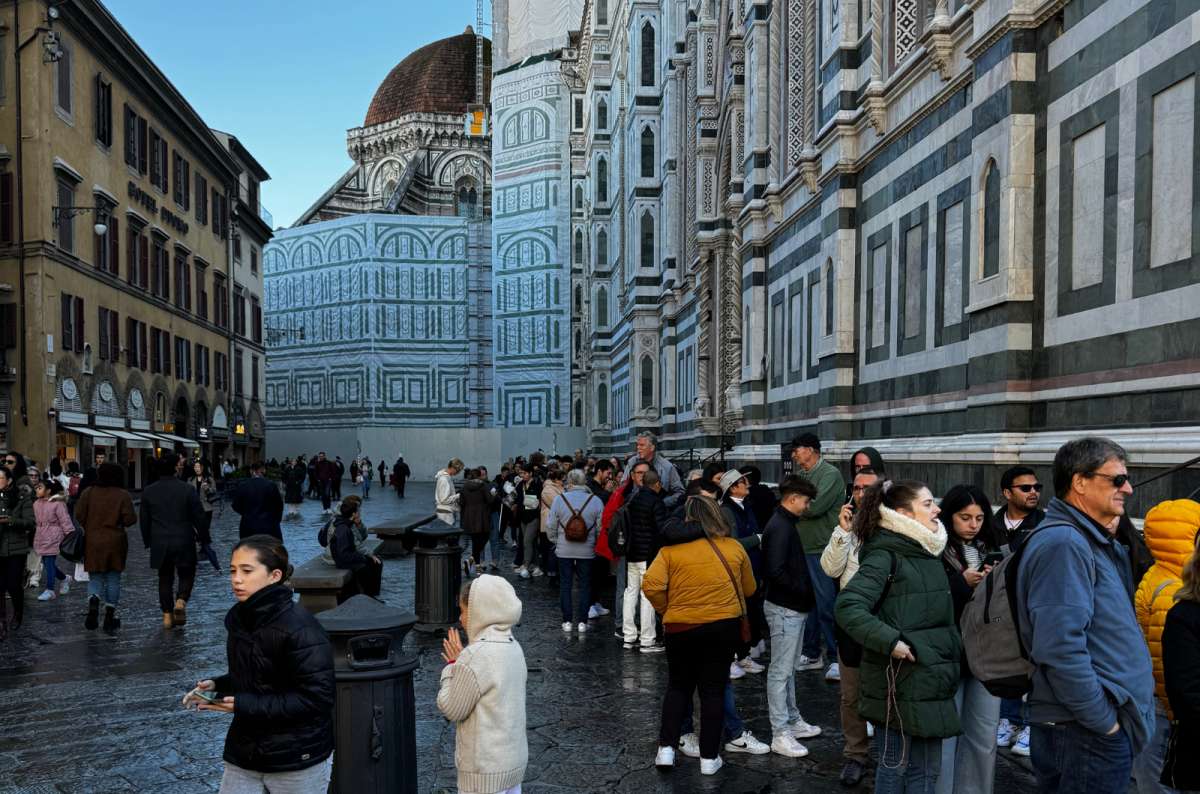
Welcome to Florence—where the lines are as long as the history
What I skipped in Florence (without FOMO)
You don’t need to see all the famous spots in Florence—you just need to stop before you start hating art. If you’re wondering what to leave out of your Florence itinerary to make sure Florence is really worth it, here are my thoughts on what to cut out:
- Climbing the Duomo. Booked out weeks in advance and honestly, the bell tower gets you a better view/photo anyway.
- Bargello Gallery. Another Renaissance sculpture museum I had zero energy left for—even though it’s a lesser-known must-visit for many hardcore art lovers.
- Santa Croce. I went, but it felt like a marble cemetery with famous people underfoot—fine, not essential.
- Mercato Centrale. I’m not into markets in the first place, it’s just a market like everywhere else.
- Half of Palazzo Pitti. Massive, repetitive, and more paintings than brain cells I had left.
- The Vasari Corridor. It reopened right after my last trip to Florence, naturally. Probably great, but not life-changing.
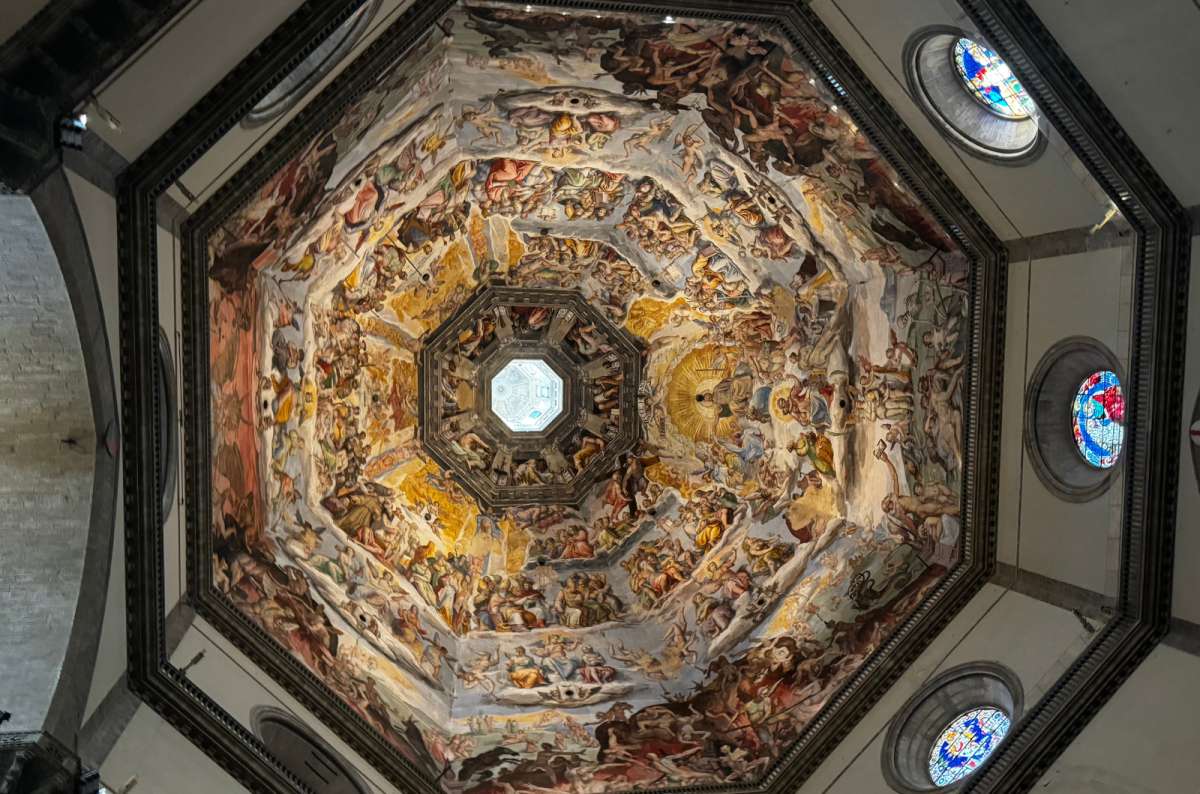
Looking up at the Duomo’s dome—Florence’s version of “heaven above, chaos below”
How to make the most of your Florence trip
It feels like you need to cram 12 centuries of art into a weekend, but you don’t—just make sure to plan the fun so Florence is really worth visiting. Otherwise, you’ll end up standing in line for hours, wondering why you didn’t just go drink wine in Siena instead.
Remember: Florence is not a city that rewards spontaneity!

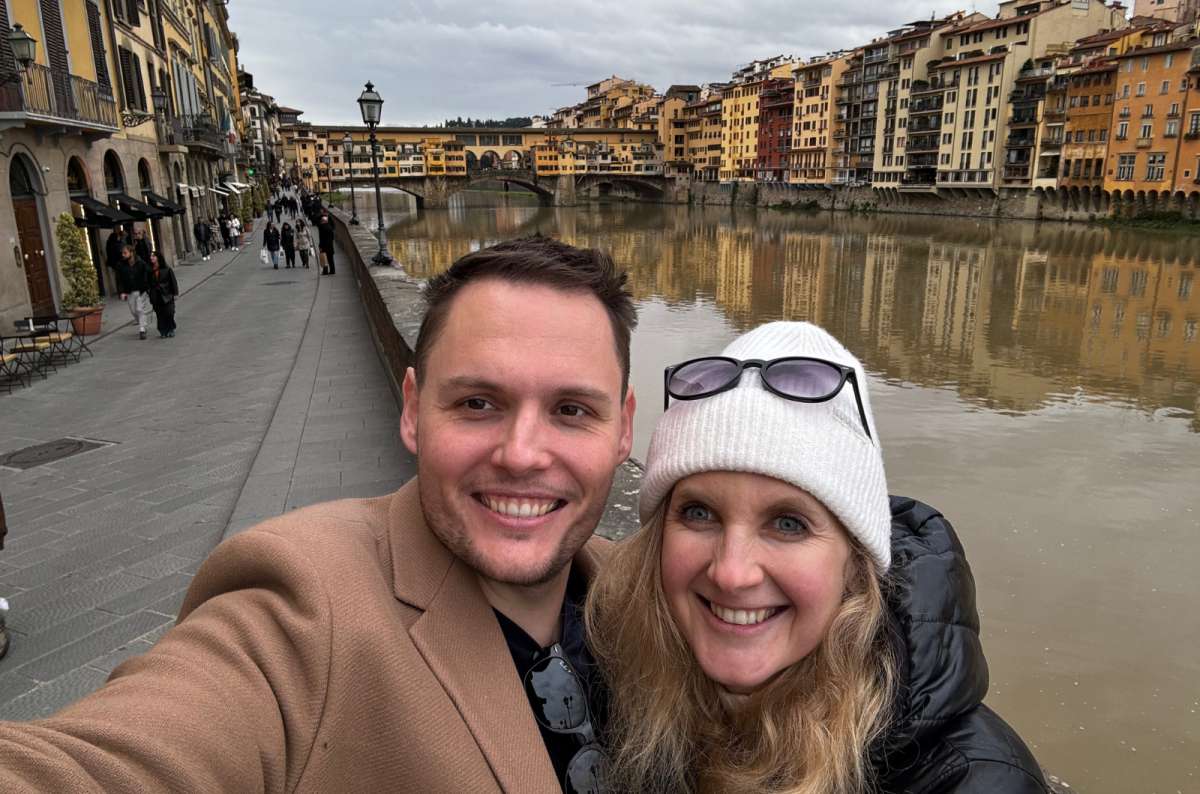
Plan it right, or you’ll spend your Florence trip in line wishing you were drinking wine in Siena instead
Here are my top tips for visiting Florence:
-
Book early or forget it. Uffizi, Accademia, and the Duomo dome/bell tower—reserve at least a month ahead. They will sell out—I couldn’t get dome tickets two weeks in advance in off-season.
-
View math: Choose the bell tower over the dome for photos (if you have to choose just one).
-
Two-hour rule. No museum deserves more than 2 hours. Really.
-
Plan routes smartly. Group the stops on your Florence itinerary so you’re not zigzagging all day. Reach sunset via the river path. End each day somewhere with a view. Because… Tuscany.
-
Eat smart. Two or three blocks off any major piazza = instantly better food and prices. No restaurant with laminated menus or “tourist special.” Dinner doesn’t start before 7 pm—ever.
-
Ditch the car. The ZTL is basically a fine generator for tourists. Park outside the center or at your hotel and walk. I stayed at I Vivai and it was perfect.
-
Evening strolls are mandatory. Florence glows so nicely at night. If you take a walk after dinner you’ll start to feel more relaxed in the crowdless streets.
-
Watch your stuff. Pickpockets love distracted tourists, especially around Ponte Vecchio and Piazza della Signoria. Be aware of tourist scams such as overcharging, fake art, or tricks by street vendors and beggars, which are common in busy tourist spots.
-
Florence is also a fashion capital. I couldn’t care less, but if you tend to succumb to peer pressure, pack your best clothes—apparently David looks better if you’re wearing Prada.
-
Use the location to its fullest. Florence's central location also makes it an ideal base for exploring Tuscany and nearby towns, so take advantage of this when planning your routes.
-
Don’t try to “see it all.” Nobody ever did, and if they tried, they all left cranky.

Is Florence expensive & what you’ll actually spend

Florence might not bankrupt you—but it sure knows how to charge for beauty
Florence isn’t ruinously expensive, but compared to other major Italian cities like Rome or Milan, it can feel pricier in certain areas, especially around major attractions.
It’s one of those cities that’s famous with tourists, so everything small adds up. Tickets, coffee breaks, and “quick” lunches near landmarks will quietly rob your wallet if you’re not paying attention.
Here’s what I actually spent—and what felt worth it:
My Florence receipt:
- Uffizi: €25 or + Vasari Corridor combo: €43 – worth it, but the extra €4 “booking fee” still annoys me.
- Accademia (David): €16 – worth every euro.
- Duomo combo ticket (no dome slot): €20 – solid value, especially for the Bell Tower + Museum.
- Palazzo Pitti + Boboli Gardens: €22 – a bit much for déjà vu walls and too many ceilings.
- Medici Chapels: €9 – I found it overpriced, but Michelangelo’s tombs are interesting enough to forgive it.
- Dinner (non-touristy trattoria): €30–45 pp with wine – totally fine if it’s not a tourist trap restaurant
- Glass of Chianti Classico: €5–8 – a bargain when you realize it’s actually good wine.
- Gelato (legit place): €3–4 – 10/10 happiness-to-price ratio.
The delicious food and wine scene in Florence

Florence cuisine hits two extremes—mind-blowing flavors or overpriced regrets (and these truffles were definitely a highlight!)
Florence’s food is either the best thing that happened to your trip or the most overpriced disappointment you’ve ever swallowed. If you stay near the tourist squares, you have a high chance of eating in tourist restaurants that charge too much for not great quality food.
Pro tip: My favorite meal in Florence was actually not in Florence at all. We had a truffle-rich dinner at Osteria di Casa Chianti in the hills outside of Florence and LOVED IT.
Food to try in Florence
- Bistecca alla Fiorentina — thick, bloody, massive steak. Only order if it’s from Chianina beef; everything else is a knockoff.
- Ribollita — hearty Tuscan soup made from bread, beans, and greens. It tastes like something a grandmother invented to survive winter.
- Pici pasta — hand-rolled noodles from Siena sometimes show up here, too. Order with cacio e pepe or ragù.
- Truffles — superb. Go out to the countryside for the best truffle spots. My best truffle meal was in the hills at Osteria di Casa Chianti—100% worth the detour (I went there twice!).
- Gelato — go for natural shades and covered tubs.
- Traditional Tuscan cuisine — don’t miss classics like pappa al pomodoro, crostini toscani, and cinghiale (wild boar).
What to skip
- Lampredotto — cow stomach sandwich. I tried. I regretted.
- Photo-menu restaurants — if you can see laminated pictures from the sidewalk, run.
- Early dinners — no self-respecting Italian restaurant opens before 7 pm. If it does, it’s feeding tourists, not Florentines.

Taste the best wine in Florence
You’re in Tuscany—act like it. Order Chianti Classico (a red wine) with steak, Vernaccia di San Gimignano on day trips. Remember, the smaller the place, the better your odds of getting a good glass.
Where to stay and how to get around Florence
Florence’s historic center is walkable—but also crowded, noisy, and an instant fine if you drive into the ZTL zone.
My hotel tip in Florence
If you’re road-tripping like I was, stay outside the center. I picked I Vivai, right by the highway—it has free parking and is the perfect base for quick day trips from Florence.
How to get around Florence
Inside the city, forget public transport—Florence is best on foot. Everything you want to see is within walking distance, and walking is half the experience anyway. Taxis exist but aren’t cheap, and the tram system is mostly useful for the airport.
How far is Florence Airport from the city center?
Florence Airport (Peretola) is 25–30 minutes by taxi or about 20 minutes on the T2 tram, which drops you right at Santa Maria Novella station. Super easy, unless there’s traffic—which there usually is.
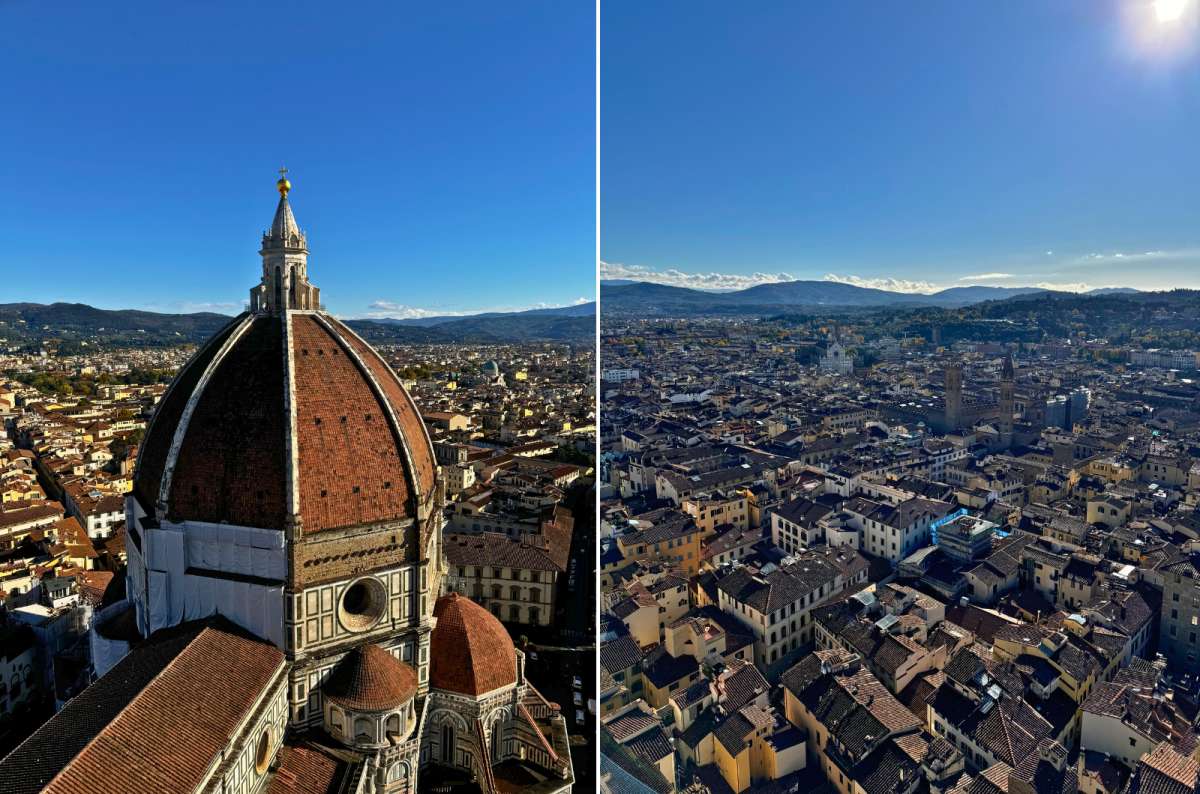
The best Florence view? Hands down from Giotto’s Bell Tower
Day trips that make Florence even more worth visiting

Pisa surprises, Siena charms, Lucca calms, and San Gimignano… looks better on Instagram
If you have an extra day or two, use Florence as a base. Or, even better, you can take an art break and head out on a day trip from Florence to reset your brain before coming back recharged for more. Everything’s within an hour or two drive.
Here are my top picks for day trips from Florence:
Pisa – better than I expected
I expected nothing and loved every (windy) bit of it. Pisa is way more than the Leaning Tower—it’s a whole square of white marble perfection surrounded by green lawns and calm streets. Read my full Pisa itinerary.
Lucca – quiet and calm
Sleepy, peaceful, and a bit too calm if you’re coming straight from Florence—your ears will still be ringing. Worth visiting after the chaos of Florence and Pisa, but not at the expense of either. See if I think Lucca is worth visiting.
San Gimignano – looks better in photos
Hilltop views, medieval towers, and crowds. It’s nice, but overhyped. If you go, start here—not end here—because it’s not the grand finale people make it out to be. Check out my review of San Gimignano.
Siena – unmissable
I visited Siena myself, and it instantly became one of my favorite places in Tuscany. Between the churches, towers, and red brick buildings, it feels like Siena never left the 14th century. I absolutely adored it. Get my guide to Siena.
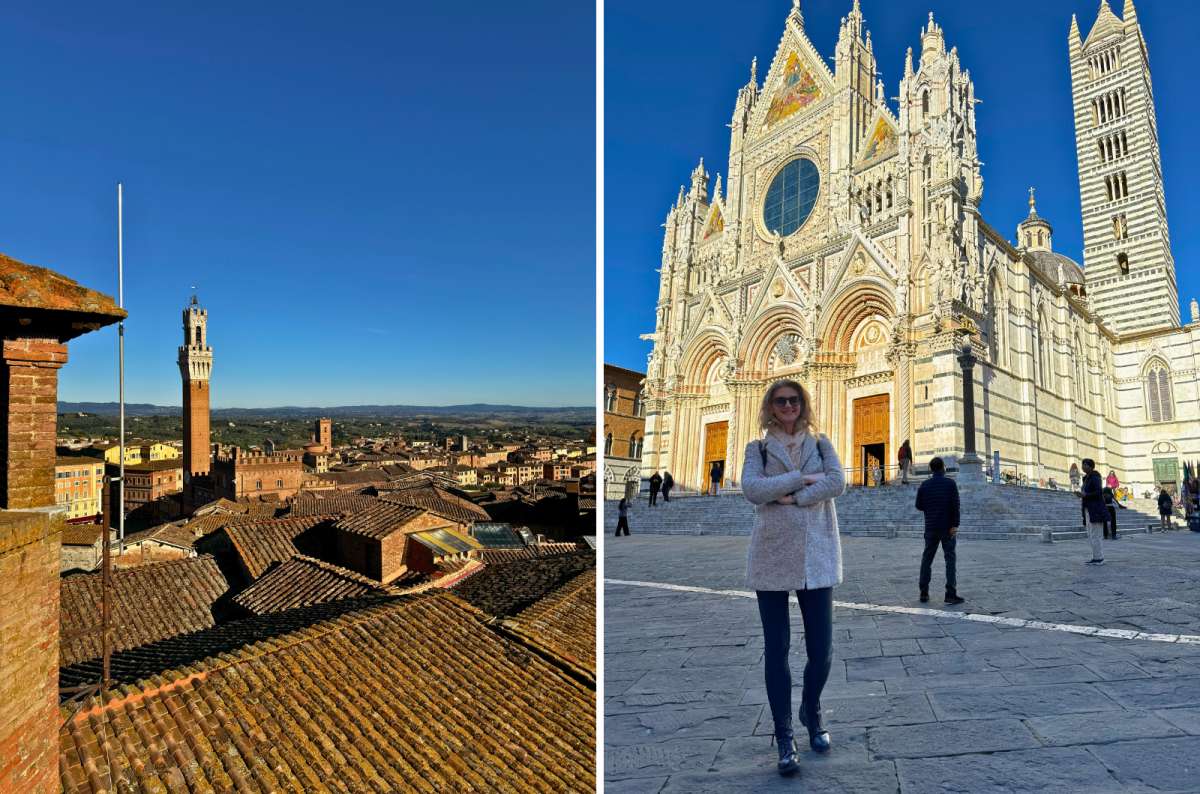
Siena feels frozen in the 14th century—in the best possible way
How many days do you need in Florence?
- 3 full days = highlights without burnout.
Enough to see the Duomo, David, Uffizi, and Piazzale Michelangelo at a comfortable pace. See my 3-day Florence itinerary for the exact route I would follow if I knew what I know now after seeing everything. - 2 days = rushed greatest hits.
You can cover the essentials in a weekend, but with no time to pause or enjoy the atmosphere. - 4+ days = for deep dives or day trips.
For art nerds, but mainly to add essential day trips to Siena, Pisa, Lucca, or (maybe) San Gimignano.
Sometimes, all you need to do is take the first step... I've filtered out the best hotels in Florence for you
Save it for yourself to come back to later, or share with your friends on social media!
I've already planned your ititnerary for the trip, complete with my travel tips.
This post contains affiliate links. If you make a booking through one of my links, I may earn a small commission—at no additional cost to you. Thank you for your support!
Quick rankings from my Florence visit
Is Florence worth visiting if I’m not an art lover?
Top 10 things to do in Florence (my version)
Full transparency: the downsides of Florence
What I skipped in Florence (without FOMO)
How to make the most of your Florence trip
Is Florence expensive & what you’ll actually spend
The delicious food and wine scene in Florence
Where to stay and how to get around Florence




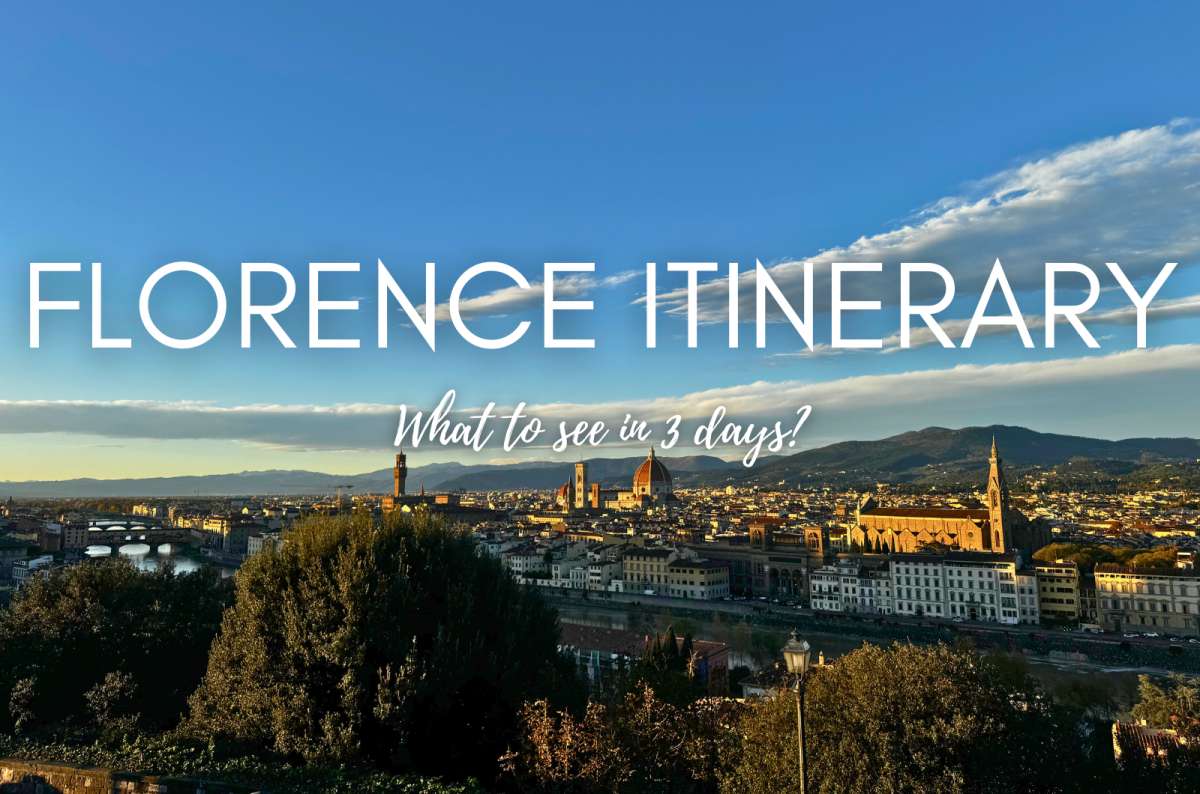
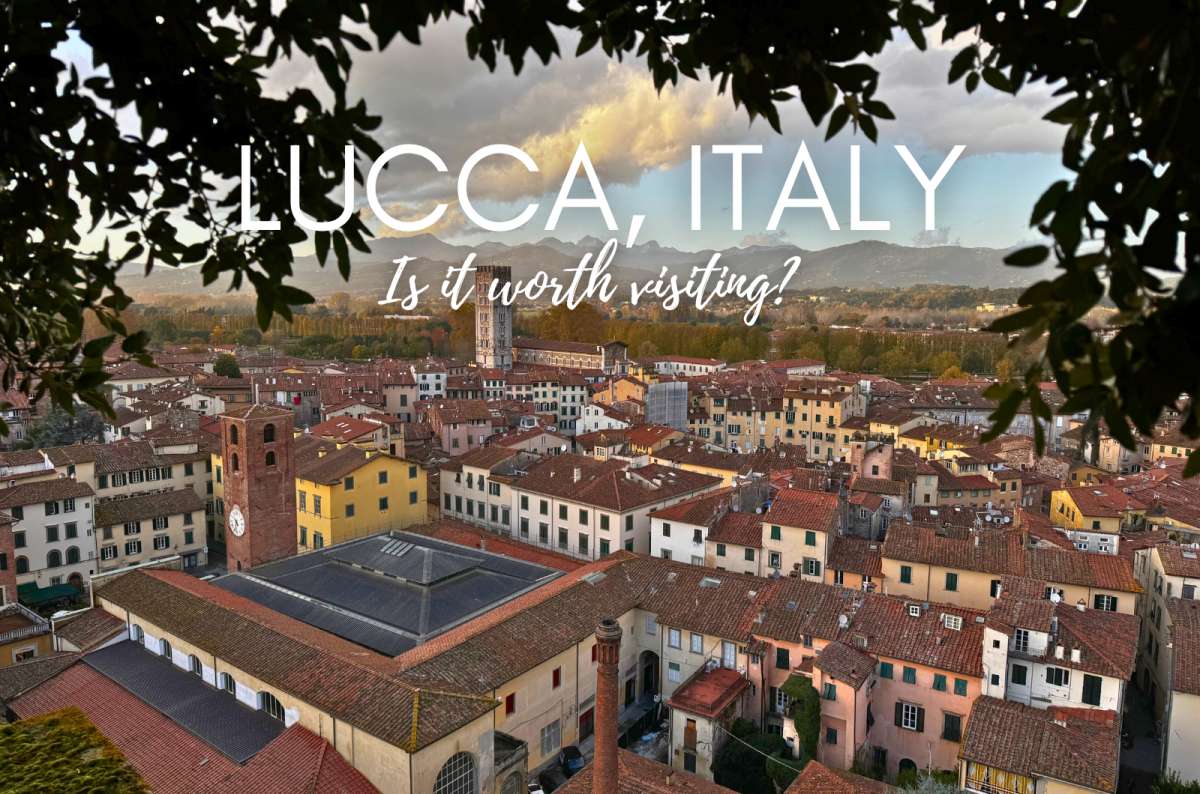




Comments | Thoughts? Give us a shout!